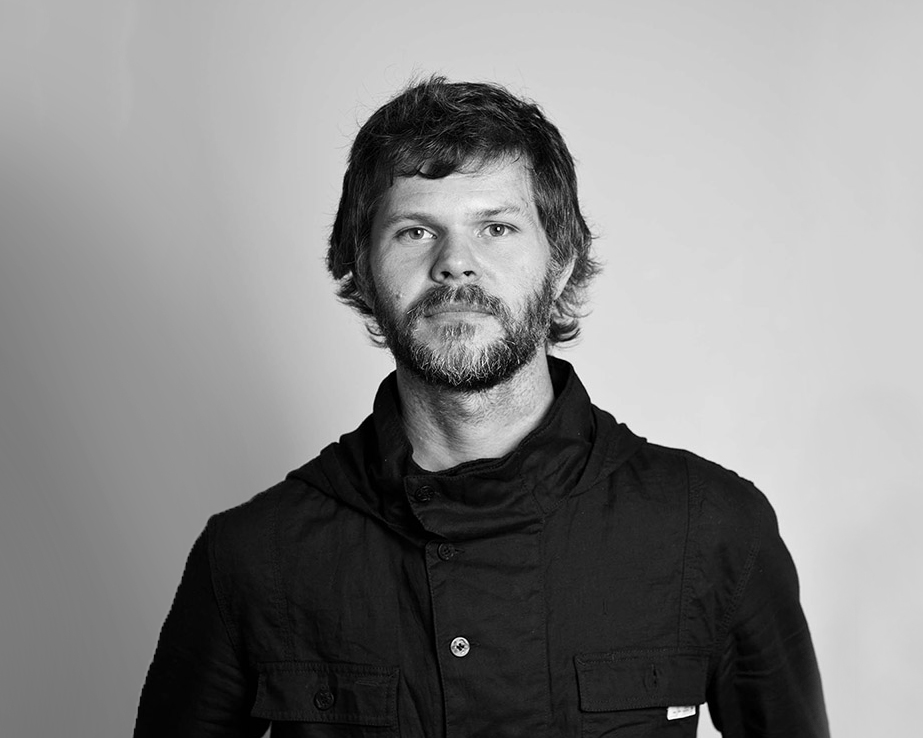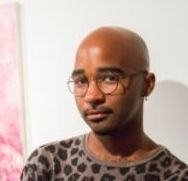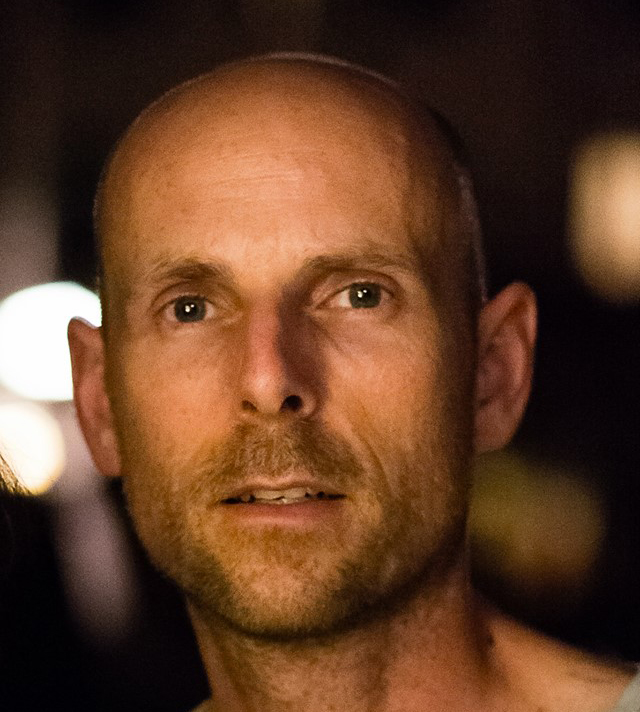The Unseen / PrintScreen Festival
Curated Catalog Media Art
Curated by Niio Curatorial
From artists who deals with camouflage and paint their bodies to works which examine microscopic images, invisible to the human eye, this video art program is about the visible and the invisible.
Artists: Geoffroy Christiane, Alexandre Erre, Shahar Marcus, Michel Platnic, Aleksandar Radan, Casey REAS, Jacolby Satterwhite, Noah Shulman, Yuge Zhou.
Contact Art Advisor
Niio
Curatorial Program
The Curatorial Program is dedicated to the idea of displaying curated moving image art in private and public spaces.
During the last decade we feel technology should be everywhere and nowhere at the same time, perfectly integrated into our everyday experience, or our homes, without intruding. The future art audience has technology in their everyday life; through technology they experience the world around them, and this is what connects them to
one-another.
The Niio Featured Exhibition is dedicated to the moving image and public space, aiming to present curated screening programs to a wider audience. It is based on the idea of mediating works from an extended list of contemporary video artists, through new digital exhibition formats and cloud-based platforms.
Casey REAS
Transference
Transference explores personal identity and the mutability of the self. The raw materials are all of the frames in Ingmar Bergman’s 1966 film Persona that contain a face, imperfectly extracted by a computer-vision system. Each frame is distorted through a loss of information to obscure the distinct identity of each face — to compress and flatten individuality.

Casey REAS
Artist
Casey Reas is an artist and educator who lives in Los Angeles. His software, videos, installations, and prints, have been featured in numerous solo and group exhibitions at museums and galleries in the United States, Europe, and Asia. His work varies from small works on paper to building-scale software installations and he balances solo work in the studio with collaborations with architects and musicians. Reas is a professor at the University of California, Los Angeles. He holds a masters degree from the Massachusetts Institute of Technology in Media Arts and Sciences as well as a bachelors degree from the College of Design, Architecture, Art, and Planning at the University of Cincinnati. With Ben Fry, Reas initiated Processing in 2001.
Jacolby Satterwhite
Reifying Desire Four Model it
Satterwhite’s Reifying Desire series represents a collaboration between the artist and his mother by way of his repurposing of her text and drawings, many intended as proposed home shopping network products. The drawings are rendered into 3D virtual space, forming the backbone of linked metanarratives that touch upon personal history, pop culture, utopia, and queering the ordinary. The artist himself shares these virtual environments, often green-screened in through dance performance.

Jacolby Satterwhite
Artist
Jacolby Satterwhite’s vibrant work weaves together performance, animation, and personal ephemera. His videos and performances build on household or cosmetic products that his schizophrenic mother imagined and sketched. Satterwhite traces these objects and incorporates them into a virtual world filled with family videos and recordings of the artist dancing and vogue-ing in bright, tight body suits. “There are limits with what you can do with objects, because objects are imbedded with history, politics and all kinds of anxiety,” he has said. “To put myself in a virtual world is a political gesture, negating all those associations.” Satterwhite’s worlds evoke the escapism of Afro-futurism and suggest a posthuman quasi-utopic virtual reality.
Michel Platnic
Genesis
Genesis short film draws inspiration from the biblical narrative of the creation of the world, as recounted in the Book of Genesis. Through pictorial, sculptural, theatrical and cinematographic means, the main and only character symbolically “recreates” day by day the act of creation. The empty space is populated through the painting of flora and fauna followed by man’s use of it, which ends in destruction. The grand and wonderful acts of the biblical creation story – as large as the universe itself – are translated here to an intimate scale, to images both near and familiar: The world is the familial space, the celestial globes are lamps, the flora are represented by house plants, the fauna by a cat and a bird; it is the creation of the world and its destruction in a nutshell. Platnic made use of the biblical creation narrative due to its fundamental status in, at least, the Western civilization. Platnic extricated from it the characteristic Western terminology that still shapes our understanding of the world and the constructs of our society, and opposes to it images from the natural world. The individual is facing the world or authority, and is not aware of his power and his responsibility. He is a prisoner of a language and a culture that conceptualize a priori his ways of observing and understanding his surrounding, that rigidify certain possibilities and exclude others. He is condemned to a fragmentary, culture-dependent understanding.

Michel Platnic
Artist
Michel Platnic (1970), born in France, moved to Israel at 28 where he found his artistic voice. Realizing his inclination towards the Fine Arts, Platnic graduated in 2010 with honors in Fine Arts from the Midrasha School of Art in Israel. That very year, he received the Shpilman Grant for Excellence in Photography and was selected by ST-ART, an incubator project for young artists. In 2013, he joined the Gordon Gallery in Tel-Aviv. In 2017, Platnic completed the prestigious Art&Media “Meisterschüler” program of the Universität der Künste (post-M.A.) in Berlin. The creation of Platnic unfolds through multiple media including photography, video, performance, painting and the links that bring them closer together. Platnic has been creating illusionary worlds and letting the viewer become part of them. Immersion in these spaces is employed as a means of deconditioning. Observing and reenacting the rituals and symbols of power, Platnic tracks down the mechanisms that authority uses to submit, to condition and to create participants in its system. By laying out the conditions of aesthetic subversiveness (notably in his series of living paintings, with its formal work on the voluntary confusion of media), Platnic beckons us to take notice of the forces that tacitly and without our knowledge indenture us. His solo exhibitions include the Multi-Media Art Museum, Moscow; Open Museum of Photography, Tel-Hai; Art Stage Art Fair, Singapore; Gordon Gallery, Tel-Aviv. His group exhibitions include Changjiang Museum of Contemporary Art, China; Gutman Museum, Tel-Aviv Museum in Tel Aviv; National Academy of Arts, Kiev; Galleria Continua, Boissy-le-Châtel and Gazelli Art House, London. The articles published on Platnic works include The Wall Street Journal, Der Spiegel, Russia; Artdaily, Lifestyle, Asia; Ocula, Asia Pacific; Nylon Magazine, Art Times, United-States; Randian, China Art Times, China; Elephant Magazine, Phaidon, United Kingdom; Artribune, Artsblog, Italy; Haaretz – Galeria, Time-Out, Telavivian, Forbes, Calcalist, Ms. Use Magazine, i24News, Kol Israel, Zman Avir, Israel.
Alexandre Erre
Your presence is no longer required
Alexandre Erre
Artist
Alexandre Erre is a Paris based artist. He was born New-Caledonia where he lived for about 17 years. He studied at the École Supérieure d’Art et Design de Grenoble and then at École Nationale Supérieure d’Art de Paris-Cergy. Through the use of installations, sculptures, videos, photographs, interventions in public spaces, performances and engraving, he dissects the codes and norms to question and create memories, tales and fictions. Alexandre Erre’s practice revolves around his native island, New-Caledonia, and broadly speaking around the processes of exotisation, racializing, gendering, domination or cultural hierarchy. His questioning, at the crossroads of gender, sexuality and community lean on his personal background and summons his insularity and his current diaspora status.
Aleksandar Radan
This water gives back no Images
Aleksandar Radan
Artist
Aleksandar Radan was born in Offenbach am Main in 1988. He has been studying art at the Hochschule für Gestaltung Offenbach since 2010. His work is concerned with digital media and the fact that we are continually lagging behind. This notion of “lagging behind” may be understood on a metaphorical level. However, it also finds direct expression in the artist’s marked interest both in body language that is influenced by technologies and mass-media communications as well as avatars and images in virtual spaces. The stereotypical, pre-programmed gestures of digital avatars that oscillate between life-like and artificially stiff form a leitmotif in Radan’s work. Improvisational moments augment these gestures, which are manipulated through game modding. Radan primarily films live action footage in altered computer game surroundings, which the artist has deliberately altered to serve as his stage sets. By interfering with a game’s software database, game modding enables one to rewrite the codes for a game’s visual surface textures and sounds, for example. In turn, they become artistic materials that can be manipulated. In Radan’s experimental short films, the programmed meets the improvised, and the default is confronted with the spontaneous actions of the artist—who is also the player—in a virtual environment. Radan’s works have been featured at multiple venues, including the Clermont-Ferrand International Short Film Festival and the International Short Film Festival in Oberhausen.
Yuge Zhou
Soft Plots
Yuge Zhou
Artist
Yuge Zhou is a Chinese born, Chicago-based artist whose video and installation works explore urban environments as they are inhabited with the collective rhythms and patterns of human activities. Zhou earned her Master of Fine Arts from the School of the Art Institute of Chicago. She also holds a Master’s degree in Computer Engineering from Syracuse University. Zhou has exhibited her work nationally and internationally including the Grand Rapids Art Museum; Elmhurst Art Museum; Spartanburg Art Museum; Zarya Center for Contemporary Art in Russia; Chicago Cultural Center; SIGGRAPH Asia in Kobe, Japan; Chicago Design Museum; Athens Institute for Contemporary Art (GA); Microscope Gallery in Brooklyn NY and ISEA 2016 in Hong Kong among many others. Zhou’s work has also been featured in the New York Magazine; The Huffington Post, Whitehot Magazine of Contemporary Art and Aesthetica Magazine. Zhou received the 2017 Santo Foundation Individual Artist Award.
Noah Shulman
Confluence
Noah Shulman
Artist
Noah Shulman is a New York City born artist and creative storyteller, with a focus on branded content, commercial, design, short-form docs and animation. With over 12+ years of experience, Noah is a creative leader with journalistic integrity who also understands that brands have goals and a story to tell.
Shahar Marcus
King of falafel
The work “King of Falafel” is a continuation of Shahar Marcus’s video works that deal with Israeli cultural symbols, manifested by various food rituals. The current work takes place on the moon and depicts a fictional event – the opening of a new falafel stand. The video begins with a wide-shot of space and continues with Marcus, dressed as an astronaut, landing on the moon. After getting ‘lost in space’ he finally notices a flag and realizes he has reached his final destination. Thereafter, he opens an inflatable falafel stand and puts up his own flag with the inscription: “King of Falafel”. After struggling with the making of the dish, his ultimate success is celebrated with a triumphal ‘selfie’. This humorous piece, shot in the spirit of ‘space adventure’ films, touches a few historical and contemporary socio-political issues. The major theme of the work is the discovery and conquest of a new frontier. This theme plays a major part in the Zionist ethos and the early formation of Israel. It also echoes the history of America and the Western European Colonial past. By depicting an astronaut who is wearing a white suit with blue stripes that resembles the Israeli flag, Marcus reflects on a contemporary ‘Colonialist’ phenomenon in the shape of Israeli tourism. the famous historical rivalry between former USSR and USA over the landing on the moon is thereby defeated by an Israeli pioneer – the first one to set up a food stand in space! .
Shahar Marcus
Artist
Shahar Marcus (b. 1971) is an Israeli based artist who primary works in the medium of performance and video art. His initial works dealt with the exploration of his own body and its limitations- incorporating various perishable materials, such as dough, juice and ice. His body served as an instrument, a platform on which various ‘experiments’ took place: lying on the operating table, set on fire, dressed in a ‘bread suit’ and more. Food is also a major theme in Marcus’s works. For instance, his recurrent use of bread as a symbol of essentiality and survival is juxtaposed with military symbols. By working with food, a perishable, momentary substance and by turning it into a piece of clothing or a set, Marcus also flirts with art history; transforming arbitrary objects and materials into something immortal and everlasting. His early video-performances feature himself along with other artists, with whom he had collaborated in the past. However, in his recent works, Marcus appears by himself, while embodying different roles and characters. ‘The man with the suit’ is a personage that was born from an intuitive desire to create a ‘clean-cut’ version of an artist, juxtaposed to the common visual stereotype of the artist as a laborer. Drawing influence from Magritte’s familiar figure- the headless suit, a symbol of Petite bourgeoisie, Marcus embodies this man with a suit as an artist who is in charge, a director. His most recent works deal with local political issues, by approaching iconic Israeli landmarks with a critical and humorous point of view. Thus, Marcus reflects on his own heritage, environment and the creation of local historical narratives. His works are influenced by the visual language of cinematography along with familiar themes and tributes to art – history and artists, such as Ives Klein, Paul McCarthy, Peter Greenway and Jackson Pollack. *Shahar Marcus is an active artist for over a decade and has exhibited at various art- institutions, both in Israel and around the world, including: The Tate Modern ,The Israel Museum, Tel Aviv Museum of Art, Petach Tikva Museum of Art , Charlottenburg, Copenhagen- Kunsthalle , Moscow Biennale, Poznan Biannale, Moscow Museum of Modern Art and at other art- venues in Polland, Italy, Germany, Georgia, Japan, the USA and Turkey.